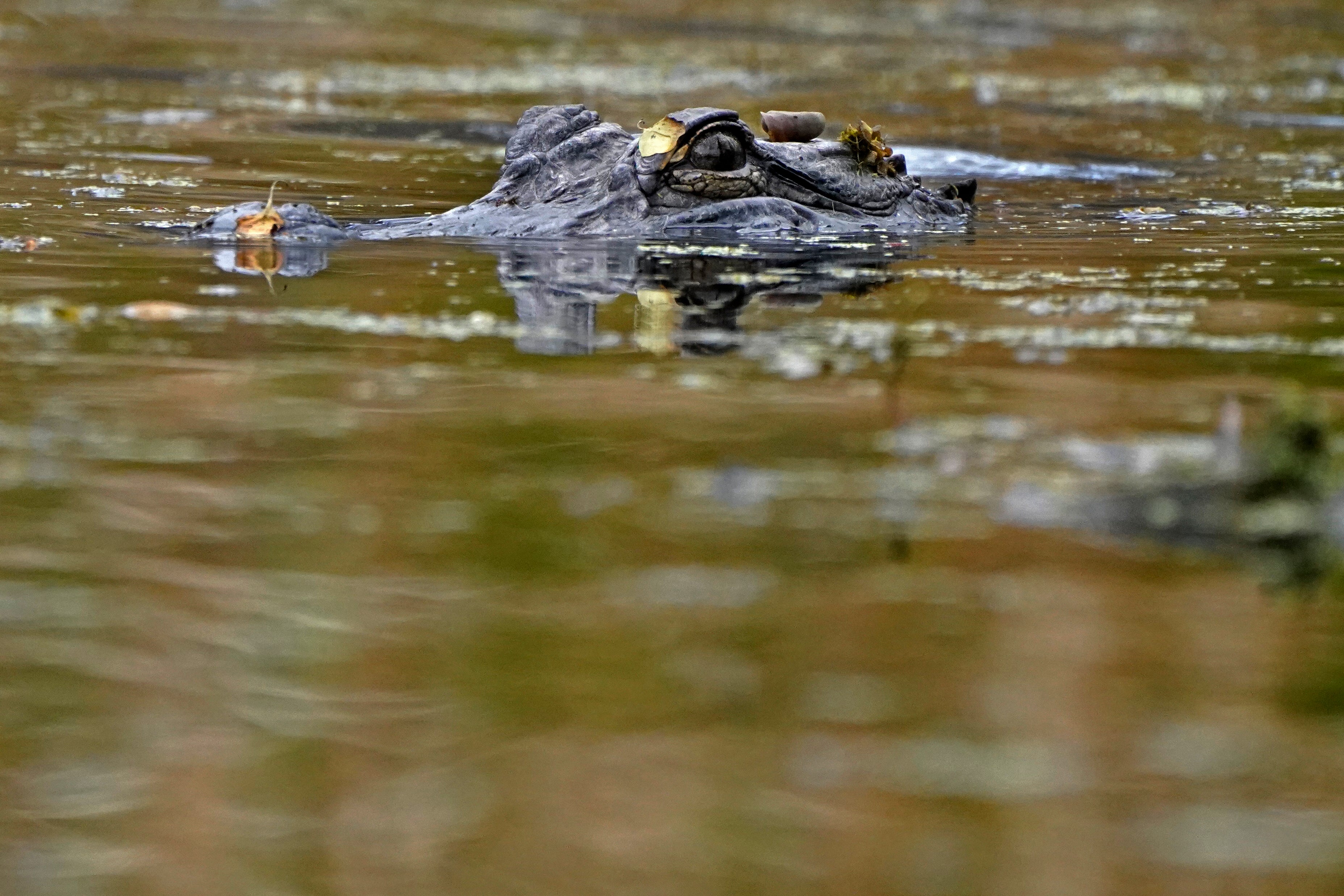Louisiana gators thrive, so farmers' return quota may drop
Once-endangered alligators are thriving in the wild, so Louisiana authorities are proposing another cut in the percentage that farmers must return to marshes where their eggs were laid

Your support helps us to tell the story
From reproductive rights to climate change to Big Tech, The Independent is on the ground when the story is developing. Whether it's investigating the financials of Elon Musk's pro-Trump PAC or producing our latest documentary, 'The A Word', which shines a light on the American women fighting for reproductive rights, we know how important it is to parse out the facts from the messaging.
At such a critical moment in US history, we need reporters on the ground. Your donation allows us to keep sending journalists to speak to both sides of the story.
The Independent is trusted by Americans across the entire political spectrum. And unlike many other quality news outlets, we choose not to lock Americans out of our reporting and analysis with paywalls. We believe quality journalism should be available to everyone, paid for by those who can afford it.
Your support makes all the difference.Once-endangered alligators are thriving in the wild, so Louisiana authorities are proposing a deep cut in the percentage that farmers must return to marshes where their eggs were laid.
“Over the past 50 years, alligator nest surveys have increased from an estimate of less than 10,000 in the 1970s and 1980s to well over 60,000 nests in recent years," the Louisiana Wildlife and Fisheries Commission said in a notice published Wednesday. "This increase in nesting has produced a population that can now be sustained with a much lower farm return rate.”
The commission is taking comments until Jan. 4 on a proposal to cut that rate from 10% to 5%.
The big armored reptiles don’t breed well in captivity, so farmers are allowed to collect eggs from nests as long as they return a percentage to the same area as youngsters big enough to foil predators other than people and much bigger alligators.
Alligator hides are made into luxury leather for products including watchbands, boots and purses. The meat is used in sausages; companies also sell roasts, steaks, ribs, nuggets, jerky and even whole skinned alligators. Forelegs are marketed as “alligator wings.”
About 1.2 million have been returned since alligator farming was approved in 1986, Jeb Linscombe, head of the Louisiana Department of Wildlife and Fisheries' alligator program, said Thursday.
The return percentage was first set at 17%, based on estimates that about 83% die in the egg or before they're 4 feet (1.2 meters) long. A wild-hatched gator that size would be about 4 years old, but readily available food lets farmed alligators grow much faster.
Raccoons other predators and floods destroy about one-third of all nests. The black and yellow hatchlings are about 8.5 inches (22 centimeters) long and weigh only 2 ounces (57 grams). That makes them easy prey for bigger gators, wading birds, otters and fish even though mother alligators stay with their babies for about a year.
Uncontrolled hunting nearly wiped out American alligators before Louisiana barred all hunting in 1962. Alligator mississippiensis was among the first species federally listed as endangered in 1967, after Congress passed the precursor to the Endangered Species Act.
“The primary reason the species recovered is .. elimination of the black market,” Linscombe said.
Louisiana allowed small, highly regulated hunts in 1972 and 1973, opening a statewide season in 1981. Two years later, the U.S. Fish and Wildlife Service ruled that the species had recovered over most of its range, and it was “de-listed” entirely in 1987.
Since 1972, more than 1.1 million wild alligators have been killed, over 11 million alligator eggs have been collected, and nearly 7.3 million farm raised alligators have been sold, according to the state management program's 2019-2020 annual report.
Surveyors who flew over coastal marshes during the summer of 2019 estimated the number of alligator nests at a record, nearly 68,000. This year's estimate was a few thousand below that, Linscombe said.
A change in weather patterns is one reason for the big numbers, he said. There are far fewer nests during droughts, when the water is low — and there were regular droughts over the first 40 years of state nest surveys. But there haven't been any droughts over the past decade.
Hunters took 23,828 alligators during the wild season in 2019. It was the second straight increase “but harvest remains depressed due to an oversupply of crocodilian skins worldwide,” the report said.
Harvest numbers this year and last have been depressed by Hurricanes Ida, Laura and Delta, and by COVID-19 restrictions, Linscombe said.
Farmers' return rate has been reduced several times over the years.
Current regulations require farmers to return 10% of hatchlings within two years — with a sliding scale based on average lengths of 36 to 60 inches (0.9 to 1.5 meters). Higher average lengths bring the percentage down.
Nearly 387,000 eggs were collected in 2017. resulting in about 39,000 farm-raised alligators two years later that were measured, tail-notched, tagged and released. Their sex was also determined, since biologists want at least half to be females.
About 450,000 eggs were collected this summer, Linscombe said.
The effects of a change from 10% to 5% may not show up for 10, 15, even 20 years, he said.
“The key to everything is to monitor it and make sure the action you took is going to have the result you thought it would,” he said.